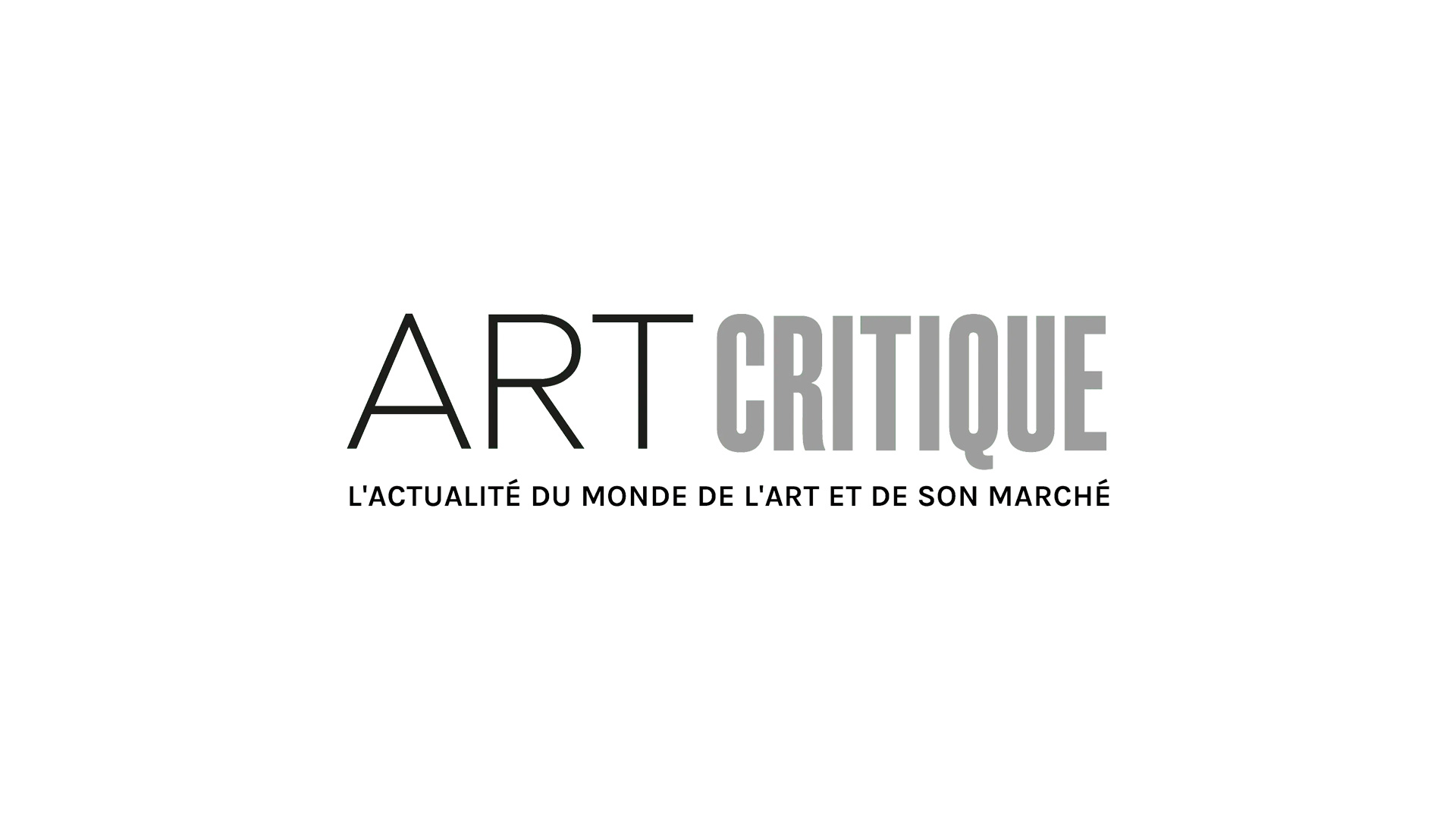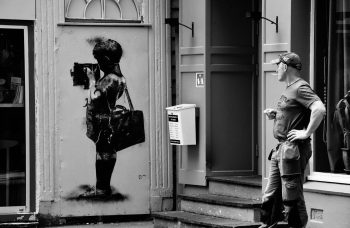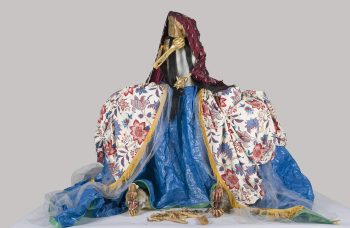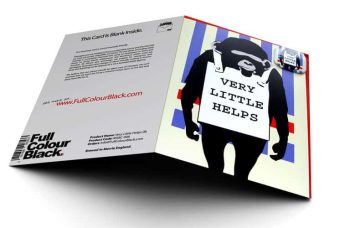Who is JR? Well, frankly, we don’t really know who he. On the spectrum of the highly-elusive Banksy to the often in the media Ai Weiwei, JR is somewhere in the middle. He doesn’t shy away from an interview or a public appearance, necessarily, but JR always wears a hat and sunglasses to keep identity under wraps, and in some cases, to avoid arrest.
JR, which isn’t his real name by the way, is 36 years old. He was born in France to Tunisian immigrants and began his career, much like Basquiat or KAWS, tagging buildings as a teenager with his friends as a way to be noticed. In an interview with 60 Minutes, JR said that he made the leap from graffiti to photography, the medium for which he is best known today, when he realized he wasn’t that great at it, he joked. Though he chooses to stay anonymous, the works he’s made have created a lasting impact and critical analysis of today’s society. He questions how it would change the message of his works if we did know who he was, and quite frankly, he’s right? Why does it matter?

Amad’, Paris, Bastille, 2004. Courtesy the artist.
When JR shifted his focus from graffiti art to photography, he began capturing the essence of his friends and those in the Parisian slums he lived in. In 2005, following riots resulting from the murder of two kids by the police, JR began taking photographs of people from the neighbourhoods that rarely get any attention around Paris. In each photo, he took close-up photos of the young people, who were portrayed as ‘monsters’ by the media following the riots, acting like monsters. JR wanted to break the stereotype given after the riots by feeding it. He then pasted large-scale posters of the photos on buildings around Paris. Nearly all of them were taken down, but one mayor of a Parisian district allowed them to stay making it JR’s first legal installation at the age of 23.
Since then, JR has continued taking photographs of those who are invisible, especially women, to much of the world much in part because society chooses to ignore them. Through the sale of his photographs and the support of a number of patrons, he has been able to continue his work.

Most recently, you might remember the large optical illusion he created around I.M. Pei’s famous pyramid entrance to the Louvre. The stunning paper creation even more pungent for its fleeting life as it tore away as tourists went to and from the Parisian institute. In 2014, he created a massive installation on the CMA CGM MAGELLAN, a French container ship. The work completed a project he began in 2007 that focused on the representation of women called ‘Women Are Heroes,’ which highlighted women, particularly from war-torn places, who often bear the brunt of war, rape, crime, and many other issues. Across 151 containers, he and his crew pasted 2,600 black and white print outs of the eyes of a woman who lives in the Kibera slums of Nairobi. After ten days of work, the ship set sail.
Today, JR’s black and white photographs are welcomed and met with consideration though they began in an environment that tried to remove them nearly as fast as they were created. Featuring everyday people, JR’s works are extra potent as they comment on those who are forgotten through crises of immigration, sex trafficking, politics, and socio-economic turmoil. His works are accessible in more ways than one.





